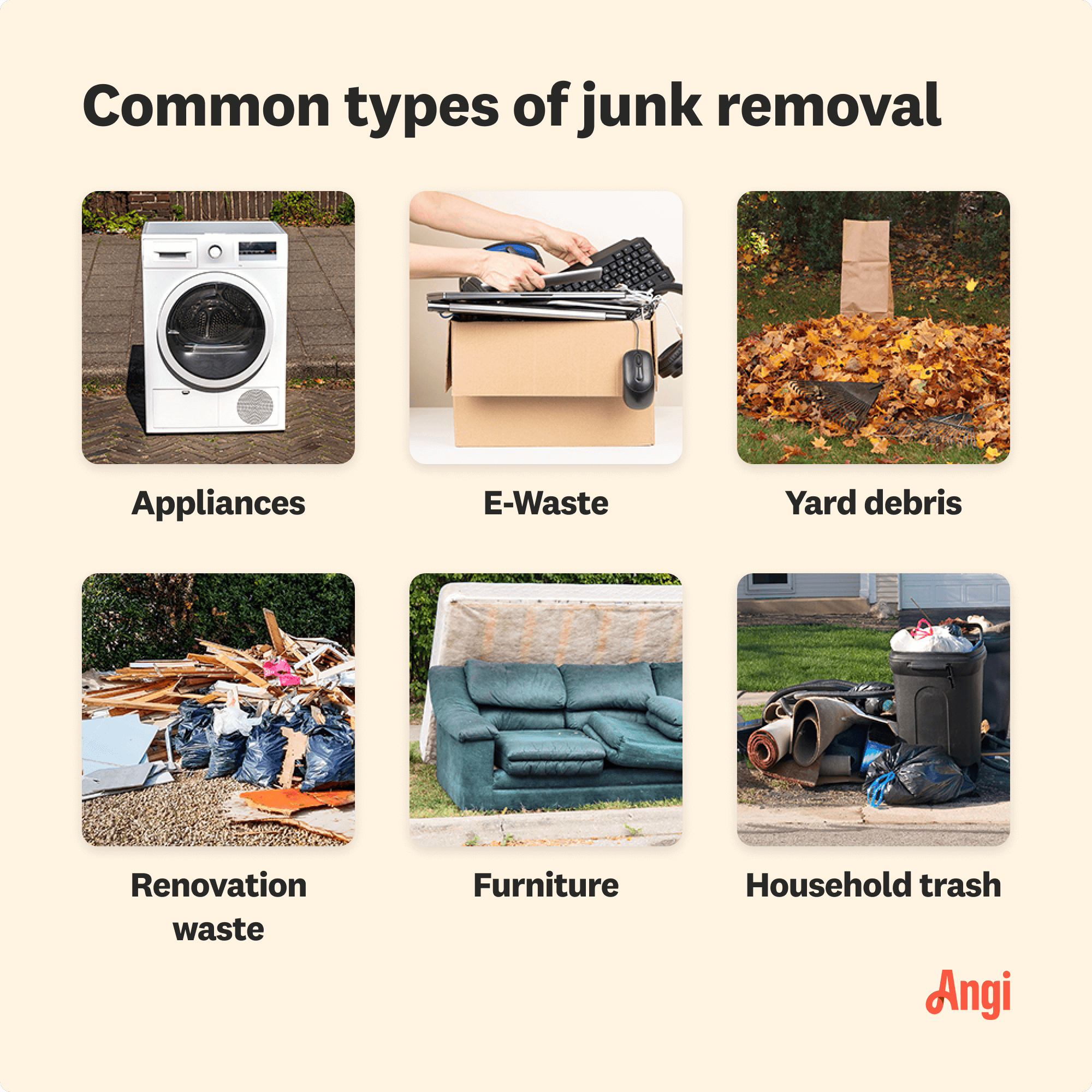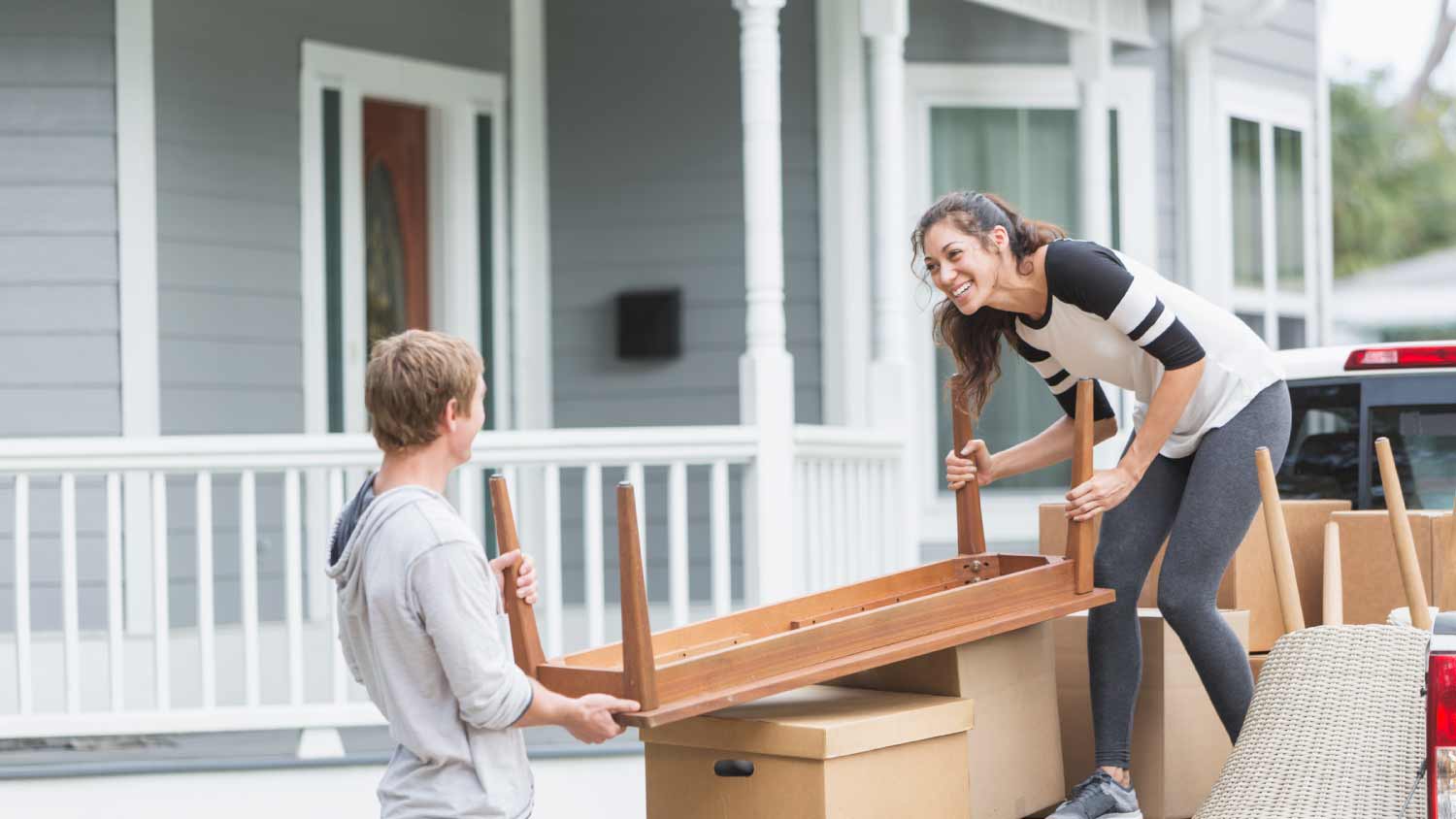
Appliance removal costs can vary widely. Learn the average cost of appliance removal and the factors that affect how much you pay.
You’re flush with options for getting rid of this bathroom fixture


Whether you’re remodeling your entire bathroom or just replacing a broken toilet, you may have an old toilet you need to get rid of—but it’s not as simple as just throwing it in the trash. When it’s time to replace your toilet, use this guide to make sure you know all your options for disposing of the old one properly.
Toilets are heavy, cumbersome, and not something you want to have to store once you have a replacement in place. Because of their size and weight, most curbside trash collection services won’t pick up old toilets with your regular collection. Failing to dispose of a toilet properly is considered illegal dumping and could lead to fines or citations.

Toilets are heavy, cumbersome, and not something you want to have to store once you have a replacement in place. Because of their size and weight, most curbside trash collection services won’t pick up old toilets with your regular collection. Failing to dispose of a toilet properly is considered illegal dumping and could lead to fines or citations.
Before you remove your toilet, take a few minutes to prep. It’ll make the process even smoother and prevent potential bathroom disasters.
First, gather all your tools and supplies in one place. The last thing you need when you’re handling a heavy toilet is searching for something when it’s out of reach. You’ll save yourself both time and frustration.
Right before you start, you need to shut off the water supply to the toilet you’re removing. The shut-off valve is likely next to the toilet, so once you locate it, turn it tight to the off position. It’s possible the shut-off valve is in another location in the home, so follow the same directions once you locate it. After the water is shut off, drain the remaining water out of the toilet by flushing the toilet until no water remains in the bowl and tank. Use a sponge to remove any remaining water.
Once you’ve shut off the water and drained the toilet, you’ll need to disconnect the toilet and prepare it for disposal. Follow these steps:
Disconnect the water supply lines to the toilet.
Detach the toilet tank from the bowl.
Unbolt the floor bolts.
Cut through the wax seal that holds the toilet to the floor and remove the toilet bowl.
Remove the toilet flange from the floor.
Cover the exposed drain hole.
No one wants an old toilet hanging around their home any longer than necessary. Fortunately, you have several options to dispose of a toilet.
Nonprofit organizations that accept building materials, such as Habitat for Humanity, may accept an old toilet that’s clean and in working condition. Contact the organization to find out their donation guidelines and process.
If you’re remodeling your bathroom or doing a whole-home cleanout, your old toilet can go into a dumpster rental. Dumpster rental costs range between $300 and $475 on average, so this option is cost-effective if you have a lot of debris or waste to get rid of. As a bonus, you can do it on your own schedule.
An easy way to dispose of your old toilet is to hire a junk removal service. This option works best if you have a lot to get rid of at once. The workers will arrive, fill up the truck with your unwanted items, and dispose of them at the appropriate facility. Junk removal costs an average of $150 to $450, depending on the size of the load.
Recycling might not be the first thing that comes to mind when it comes to toilets, but they can often actually be recycled. You can’t put it out for collection with the rest of your recycling, though—you’ll need to find a facility or service that accepts porcelain for recycling.
Many municipal and private trash collection services will pick up and dispose of old toilets, but there’s often a process you need to follow first. Get in touch with your waste collection service to find out if they’ll pick up toilets and what you need to do to get it ready for collection.
Toilets are heavy, unsanitary, and challenging to dispose of. Give your toilet a thorough cleaning and disinfect it before starting the removal and disposal process. Make sure the water is turned off, and all water lines are properly disconnected before you remove the toilet.
When moving the toilet for disposal, ensure you have a secure grip on it or that it’s securely fastened to a dolly. Porcelain can shatter easily if dropped, and you don’t want to have to clean up tiny porcelain shards in the middle of your project.
If you prefer to hire a professional for this job versus a DIY, try contacting a local plumber near you. The average cost of hiring a plumber is $45 to $200 per hour, but you may find the expense is worth it if you’re uncomfortable removing your own toilet. Plus, they’ll likely dispose of the old one for you, too.
If you can remove the toilet yourself, a local junk removal company can take it off your hands, along with any other junk, waste, or debris you need to get rid of.
From average costs to expert advice, get all the answers you need to get your job done.

Appliance removal costs can vary widely. Learn the average cost of appliance removal and the factors that affect how much you pay.

Junk removal costs depend on the volume and type of waste you need removed, but paying a professional saves you time and energy over hauling it yourself.

Removing a hot tub costs an average of $400. Learn what factors affect hot tub removal costs, including size, type of hot tub, and disposal method.

Construction debris removal costs depend on the weight or volume of debris. Learn the cost factors at play and how you can save on removal.

Knowing how to dispose of a piano is a vital part of reclaiming space the instrument may have taken up. This guide will help point you in the right direction.

In this guide, learn how to identify and dispose of hazardous waste safely.